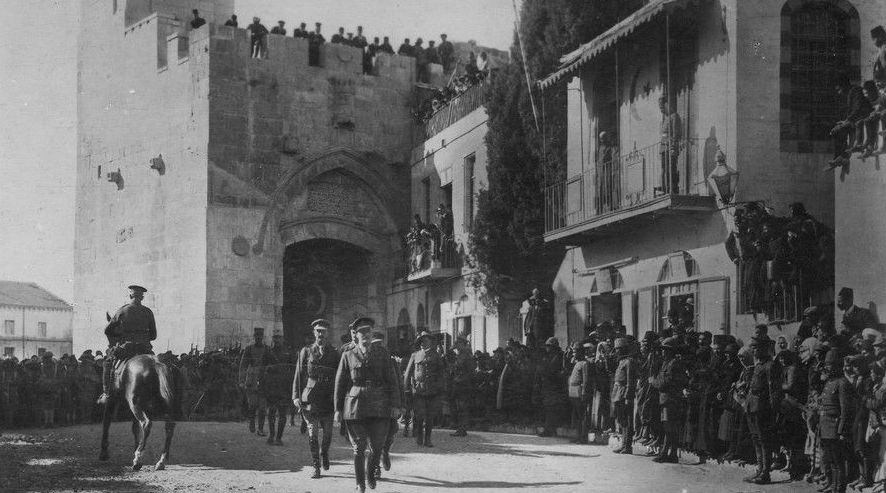Mihri Rasim Between Empire and Nation
Episode 378
hosted by Sam Dolbee and Shireen Hamza
Feed | iTunes | GooglePlay | SoundCloud
Many myths have accompanied the life of Mihri Rasim, but few are as interesting as her life itself. Born to a wealthy family in Istanbul in the late Ottoman period, Mihri Rasim became a politically connected painter, living in Italy for several years on her own and then Paris, where she played a key role in the salons of Ottoman dissidents known as the Young Turks. In the wake of the 1908 Constitutional Revolution, she returned to Istanbul, and opened the Fine Arts School for Women in Istanbul, where she went on to teach. After the war, she went to Italy, and then the United States, where she continued her work painting and teaching. In addition to many self-portraits, she also painted various powerful figures, among them Mustafa Kemal, Mussolini, and Thomas Edison. Listen for a discussion of art, gender, and migration in a period of momentous political change.
Stream via SoundCloud
Contributor Bios
 |
Özlem Gülin Dağoğlu is an art historian, whose research explores art and politics of the Late Ottoman Empire and early Republican Turkey with a focus on cross-cultural exchanges; modernism and globalization; nationalism and gender; and, Orientalist photography in the U.S. In 2017, she obtained her Ph.D. on Mihri Rasim, Turkey’s iconic woman artist and a deeply committed feminist. She is currently working on her monograph provisionally entitled Mihri Rasim (1885-1954): Istanbul – Paris – New York, the Global Network of an Ambitious Young Turk Painter. She is also co-organizing the first retrospective exhibition devoted to the artist at SALT Galata in Istanbul, which will be held from March 7 to June 9, 2019. |
 |
Sam Dolbee completed his Ph.D. in 2017 at New York University. His book project is an environmental history of the Jazira region in the late Ottoman period and its aftermath. |
 |
Shireen Hamza is a doctoral student in the History of Science department at Harvard University. Her research focuses broadly on the history of science and medicine in the Islamicate Middle Ages, especially in the Indian Ocean World. |
Credits
Episode No. 378
Release Date: 13 September 2018
Recording Location: Harvard University
Audio editing by Sam Dolbee
Music: Zé Trigueiros
Bibliography courtesy of Özlem Gülin Dağoğlu
Release Date: 13 September 2018
Recording Location: Harvard University
Audio editing by Sam Dolbee
Music: Zé Trigueiros
Bibliography courtesy of Özlem Gülin Dağoğlu
Images
 |
| Mihri Rasim poses with portrait of Franklin Delano Roosevelt, NY Times April 16, 1932. Source: NYPL |
Select Bibliography
Paintings of Mihri Rasim available at http://ismek.ist/blog/icerik.aspx?p=3527
Açba, Leyla (2010), Bir Çerkez Prensesinin Harem Hatıraları, ed. Edadil Açba (Istanbul: Timaş Yayınevi).
Arat, Yesim (1997), 'The Project of Modernity and Women in Turkey', in Reşat Kasaba and Sibel
Bozdoğan (ed.), Rethinking Modernity and National Identity in Turkey (Seattle, WA: University
of Washington Press), 95-112.
Berke and Burçak Inel (April 2002), 'Discovering the Missing Heroines: The Role of Women
Painters in Early Modernist Art in Turkey', Middle Eastern Studies, 38 (2), 205-12.
Dağoğlu, Özlem Gülin (2017), 'Mihri Rasim (1885-1954) : L’Ambition d’une Jeune-Turque
peintre', (Université de Montréal).
Demirdirek, Aynur (1999), 'In Pursuit of the Ottoman Women's Movement', in Zehra F. Arat
(ed.), Deconstructing Images of “The Turkish Women" (New York: Palgrave), 65-81.
Eldem, Eldem (2018), L'Empire ottoman et la Turquie face à l'Occident, Paris: Collège de France – Fayard.
Ersoy, Ahmet (2015), Architecture and the Late Ottoman Historical Imaginary: Reconfiguring the Architectural Past in a Modernizing Empire, Burlington, VT: Ashgate.
Nochlin, Linda (Fall 1996), 'Art and the Conditions of Exile: Men/Women, Emigration/Expatriation', Poetics Today, 17 (3, Creativity and Exile: European/American
Perspectives I), 317-37.
Tekeli, Şirin (ed.), (1995), Women in Modern Turkish Society : a Reader (London, Atlantic
Heights, N.J.: Zed Books).
Tuna, Mahinur (2007), İlk Türk Kadın Ressam Mihri Rasim (Müşfik) Açba (Istanbul: Yorum
Sanat Yayınları).










Comments
Post a Comment
Due to an overwhelming amount of spam, we no longer read comments submitted to the blog.